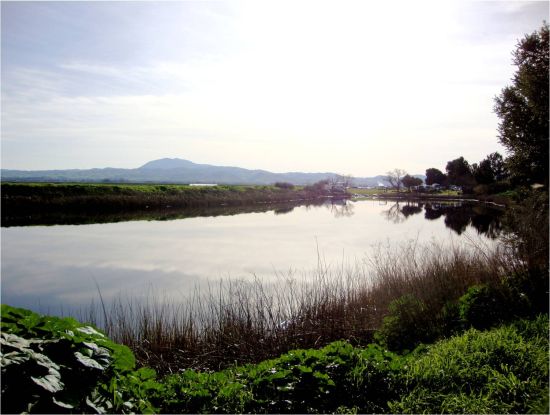Thriving deltas: An adaptive approach
Richard Fisher and Ryan Whipple
Deltas are pinnacles of life: they provide environmental wealth to support biodiversity, human population centers, and industrial and agricultural production. Land use, water diversion, flooding, subsidence, salt water intrusion, and ultimately levee failure threaten these complex ecosystems and it is therefore important that dynamic approaches be taken to avoid disaster, and sustain thriving Deltas. This report focuses on the Sacramento-San Joaquin Delta but the lessons learned can be extended across the globe.
The Sacramento- San Joaquin Delta is the primary water resource for California’s urban and agricultural development. Sherman Island sits on the western edge of the Delta and is a critical geographic feature in balancing the flux of saltwater in the Delta. However, Sherman Island is at risk of catastrophic failure. Flooding, saltwater intrusion, and ongoing subsidence are current threats that become further exacerbated by global climate change. Through collaboration with industry representatives, inhabitants, academics, and local government officials, the environmental, social, and economic impacts of these issues were holistically addressed. The synthesis of stakeholder input with natural and engineered environments led to the design of an Adaptive Water Management and Agricultural Diversification System (AWMADS) composed of a levee enclosed flood storage and wetland habitat area that can dynamically support hydroponics (soil-less agriculture), aquaculture (concentrated production of aquatic species), and many other optional components over the system’s life. Engineering, socioeconomic, environmental impact and life cycle analyses, and exploration of mitigation strategies demonstrate the theoretical success of the system to protect against flooding, sequester carbon, restore habitats, and reinvigorate the local economy.

Sherman Island
Follow up
For the further development of the presented solution, the jury had suggested to pay attention to a full integration of the various elements of innovation and alternative land and water use, the impacts on the neighbouring areas in the delta and a sound cost-benefit analysis. In this respect potential positive effects on upstream communities could help to increase the feasibility of the solution.
With these suggestions in mind, the Sherman Island Delta Project Team set out to develop a series of local development project evaluations which included site visits, economic, environmental, and engineering characterization culminating in the development of feasibility studies for the leading design option. Best presented as a 'Case Study Report', the document was compiled as the direct response to this suggestion as well as the team’s serious consideration of the Delta Alliance’s valuable insights for innovative, sustainable design investigation.
Organized as three major chapters, the case study report includes a thorough site characterization report, a stakeholder and goals assessment, and finally, an enumerated case study analysis. The results of these locally-sourced case studies are intended for use in the development of a single most practical, sustainable and feasible system of coordinated design elements for suggested implementation on Sherman Island in the Sacramento-San Joaquin Delta. In producing this document, the team endeavours to balance specific site necessities, the cost of implementation, and the potential stakeholder benefits from the outset so as to expedite an appropriate, research-backed development proposal. The contents of this report are the results of the work over the past year and are based on the tireless work of the project team who could not pursue this subject without the financial backing of the Delta Alliance.
The Case Study Report for the Sherman Island Delta Project is principally a foundation document to guide the specialist team, stakeholders and agency officials in creating a model design scheme for the project site. As equal, coordinated investment is necessary from each interest category, the Case Study Report allows all parties to review, reflect and invest in those design solutions they find both physically and politically ideal for this critical property. From this body of exhibited design success that has been demonstrated by like proximate developers, an approach to rehabilitating this 1,000 acre portion of Sherman Island can be defined without risking the continued marginalization of the island community.
Read the final report (pdf)